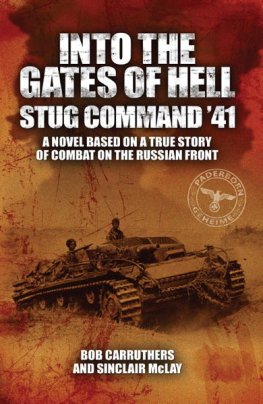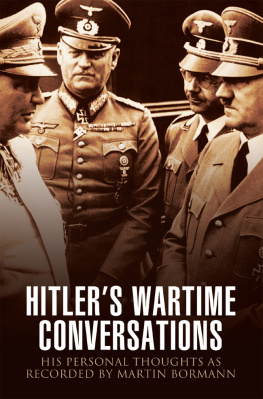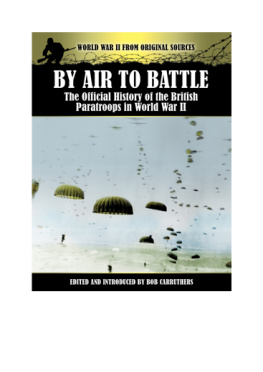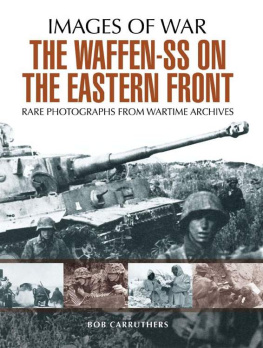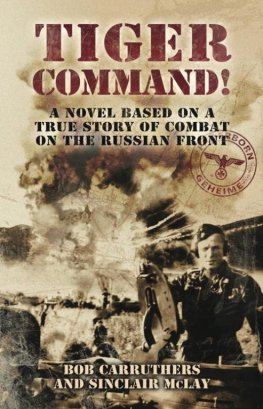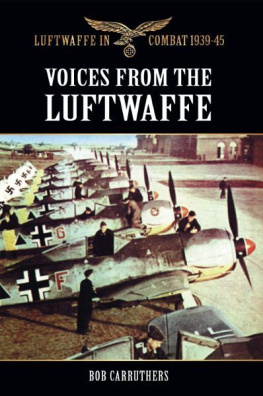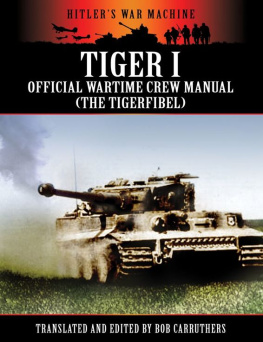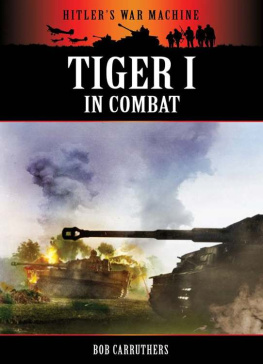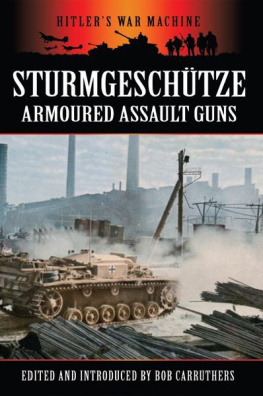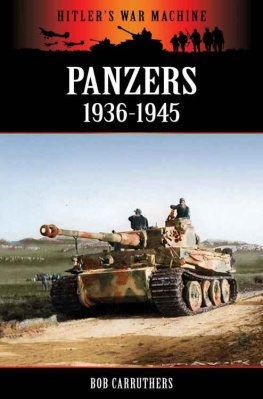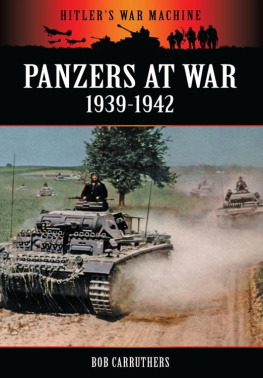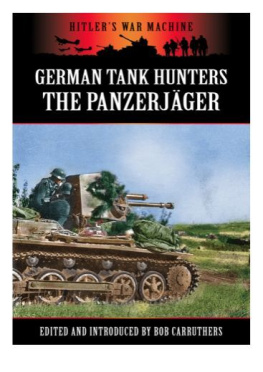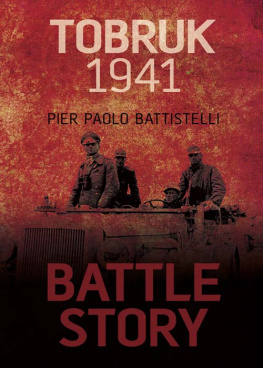Bob Carruthers and Sinclair McLay
INTO THE GATES OF HELL
STUG COMMAND 41
For Mr McWhinnie whom we are both privileged to have as friend.
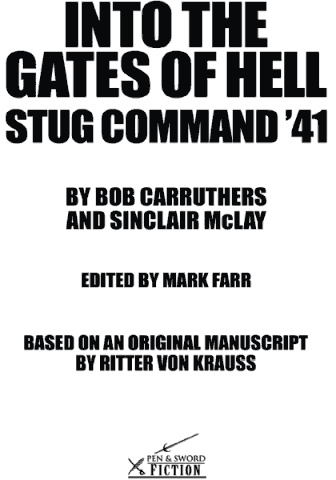
- CHAPTER 1 -
Die Welt wird Seinen Atem halten
BREATH. SS-Hauptsturmfhrer Hans von Schroif had no idea why this single word should enter his mind at this time. Perhaps it was because in the still silence of the pine forest, amongst all these men and machines, all he could hear at that moment was the sound of his own breathing. Breath; life begins with the first violent inhalation and ends with the fight for our dying breath. Yet, for something so vital, so fundamental, we spend our lives so unaware of its presence; except in moments like these. How could it be possible? Three and a half million men, countless tanks, trucks, artillery pieces, horses and aircraft along a 3,000 kilometre front stretching across almost the whole span of the continent of Europe, from Memel to Rumania and, despite everything, for one fleeting moment all von Schroif could hear was the sound of his own breathing.
In this briefest of lulls before the coming storm, von Schroif sensed that many of the men in this colossal human chain were attuned to the same delicate sound, the sound of their own breathing. The Fhrer had been right he was always right in finding the exact words and phrases when speaking to the German people and the fighting men of the Reich. When Barbarossa begins, the world will hold its breath.
Now, at 00:45 on Sunday the 22nd of June 1941, it seemed as if the world was indeed holding its breath. The flow of time itself seemed to have stopped. For the hundredth time SS-Hauptsturmfhrer Hans von Schroif glanced quickly at his watch still two hours to go! He was waiting for the moment when all hell would be unleashed on, what he hoped would be, the unsuspecting Russian forces on the other side of the Bug River, and the war against the Reds would begin at last.
His thoughts turned to his command. Arranged in the trees along the roadside were the three batteries of mobile assault guns which, together with his own command half-track, should have made up the eighteen vehicle strong Sturmgeschtz battalion. That was the theory, at least. According to the official established tables, there should have been eighteen machines standing by under the fir trees. The fighting efficiency of the battalion was a matter of overwhelming private and professional pride to Hans von Schroif, but even the fabled German efficiency sometimes failed, and no army got everything right. So far, the factory had delivered only fifteen Sturmgeschtze with the depressing result that, before a blow had even been struck, each battery was reduced to just five machines. Nonetheless, von Schroif took strength from the knowledge that each of the three abteilungen consisted of five brand new machines of the Ausf C type and each was well run by his subordinate commanders who were clear about their duties.
As the key component of the newly formed Kampfgruppe von Schroif, he planned to issue his command with their final orders at 02:00 hours. For now, there was nothing to do but wait. He had seen to everything personally. The smooth running of the battalion was all that mattered in his life. He was satisfied that the battery and platoon leaders were all hand-picked and extremely able.
The Sturmgeschtze were armoured fighting vehicles that had been created for a specific tactical purpose that was very different to that of the Panzer formations. Whereas the Panzers were intended to force a breakthrough and keep going, deep into enemy territory, the Sturmgeschtze were intended to stick close to the grenadiers and provide close infantry support against enemy field defences using direct fire from their formidable 75mm main guns. The StuG, as it was widely known, was intended to provide a movable, well-armoured, artillery piece for close infantry support in the gritty frontline assaults, and these life or death struggles were the lifes work of Hans von Schroif.
Despite the gloom of this dark moonless night, the bright canopy of stars visible through the gaps in the forest provided a contrast against the black shapes of the trees, and the stark shapes of the waiting Sturmgeschtze were easily identifiable. To a layman, this squat, oblongshaped machine with its short, stubby main gun looked like a tank that was lacking a turret. To the infuriation of the more pedantic members of their crews, the public often mistook them for tanks. However, the absence of a turret, combined with the grey uniforms of its crew, marked the Sturmgeschtz out as a mobile artillery piece. Here was the latest innovation in the Wehrmacht armoury, an assault gun crewed by only the bravest and the most daring, trained to rumble up to the enemys strong points and fearlessly fight it out, toe-to-toe with the toughest defences, right there in the frontline.
To be fair to the layman, there was a familiar element to the StuG. It was not entirely a purpose-designed machine. It was built on the recognised chassis of the Panzer III tank. This proven chassis had only recently been adapted to provide this new type of armoured fighting vehicle for a very specific role. The Sturmgeschtz was simply an armour-plated and highly mobile gun platform designed to trundle up to the heaviest of field defences and blast them into oblivion at short range.
In common with his revered Fhrer, von Schroif was inclined to look back at German history for echoes of a heroic past, and in his mind he identified his troop with the siege trains of the Teutonic Knights who, in the medieval era, had expanded the eastern boundaries of the German world. He viewed the determined men who manned the Sturmgeschtze as the successors to the hardy foot soldiers who had battered at the defences of the strongholds that had been wrested from the Slavs by the Teutons. What was the StuG after all but a modern battering ram? It was certainly an effective machine. Following their successful deployment in France and Greece, the StuGs were now rightfully hailed as potent infantry support weapons, ready to be called into action wherever there was a particularly tough nut to crack.
The thoughts of Hans von Schroif now returned to the men who manned his command half-track as he began to walk along the sand-strewn road towards the dumpy shape of his own machine. The thick sand deposited on the road surface absorbed the sound of thousands of hobnailed boots that had been passing all day long. With them had come thousands of trucks and endless lines of horse-drawn wagons and guns. Now there was silence.
Von Schroif was lost in thought as he walked and was oblivious to the figure that slipped out of the trees and began to follow in his footsteps. Unmindful of everything around him, von Schroif was focused on the disparate elements of the task ahead. Should he give his own crew a few last words of encouragement, or leave them alone with their thoughts? He decided to leave them undisturbed. What possible need could he meet at this time? Now it was all about confidence and trust. He believed in these men and there was nothing he could offer them now that they couldnt offer themselves. Some of them had been with him since before the war, before Poland, France and Greece. They had proved themselves to him, not just by responding dutifully and manfully to the planned and the expected, but also by rising courageously to the unplanned and the unexpected. Doggedness, improvisation and teamwork had marked them as out of the ordinary and von Schroif was confident that the trend would continue.
Despite his long and successful combat experience, even von Schroif now betrayed a degree of nervousness. As he reached the first in the long line of silent vehicles his fingers drummed rhythmically on the cold, unforgiving hardened steel roof of the fighting compartment of the Sturmgeschtz. It was reassuringly solid and a source of immense comfort, and it reflected his pride in German engineering. The Sturmgeschtz was a radically different machine and only a chosen few were awarded the privilege of commanding one. Von Schroif took huge satisfaction in being given command of an entire battalion.

